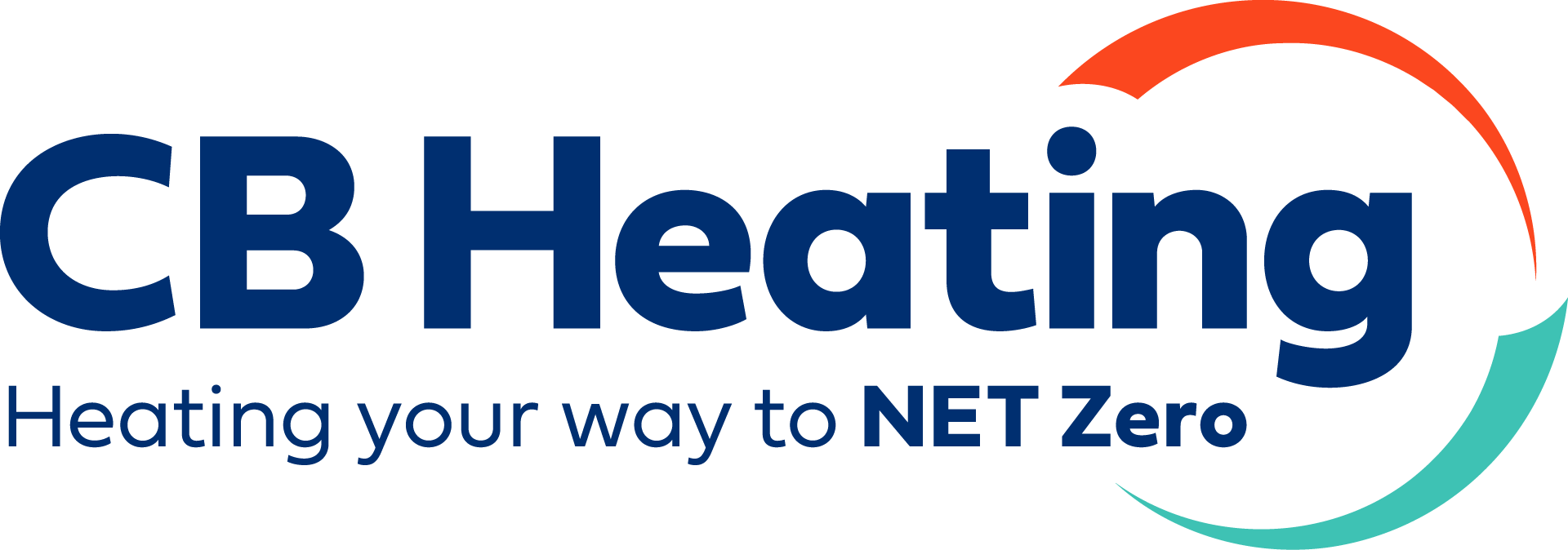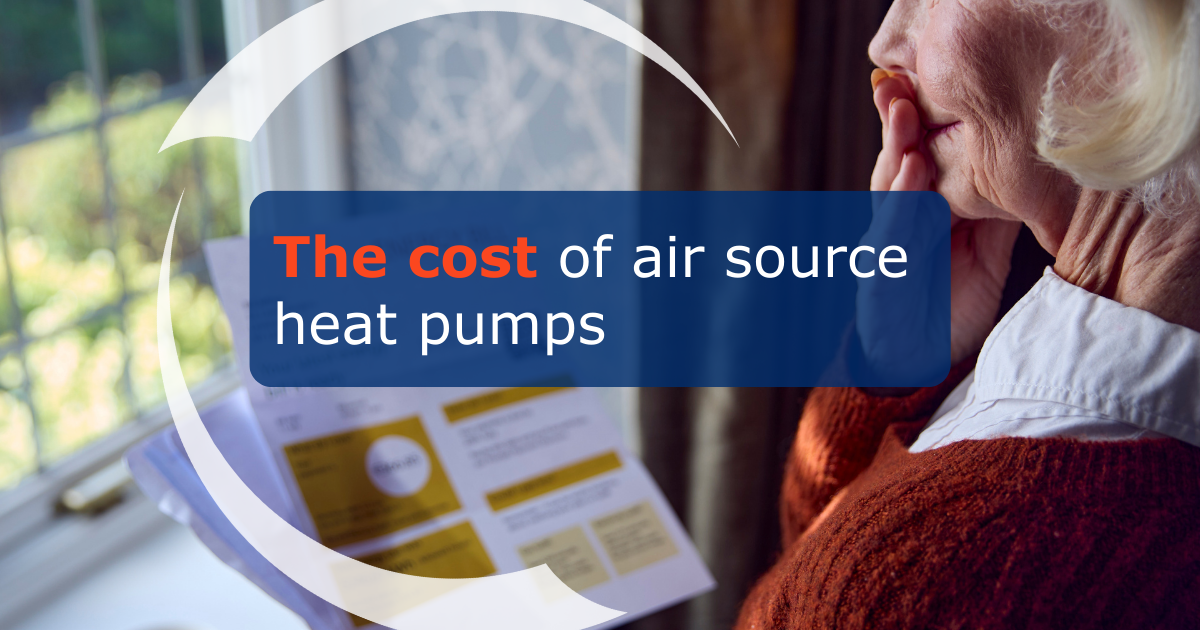Air Source Heat Pumps: How much do they cost?
As with almost any significant investment into your home, the cost of upgrading your heating system is more complex than a single number.
An air source heat pump heating system is specific to your home and the requirements for any installation vary. Things such as the size of your home, its current heating system, and how well insulated it is, all play a part. Let’s look at installation costs, running costs and servicing and maintenance.
Installation costs
How Much Does An Air Source Heat Pump Cost?
Taking into account the £7,500 grant available, either through the Boiler Upgrade Scheme for England and Wales, or the Home Energy Grant for Scotland, an Air Source Heat Pump could be closer than you think.
|
2 Bed Bungalow Average Price = £4,600
|
3 Bed Semi Average Price = £5,925
|
4 Bed Detached Average Price = £6,150
|
To maximise efficiency and give you the best system, it isn’t just a case of swapping your old boiler for an air source heat pump. The two systems work very differently. We will design a specific system for your home and lifestyle.
Air source heat pump systems work at a lower flow temperatures than traditional boiler systems. This means some radiators may need to be replaced with ones with larger surface areas. This lets the heat generated by the heat pump heat your home and hot water as efficiently as possible. Older radiators will still work, but the system efficiency may be significantly reduced.
So, how much does it cost? As every heat pump system has to be designed specifically for you, your quote is also bespoke. However, alongside the £7,500 Boiler Upgrade Scheme (BUS grant) and any eligible finance options (see below), a complete heat pump system, designed and and fully installed, could be more affordable than you think. Our team will talk you through your options with no obligation.
We believe you’ll find this a reasonable level of investment for a dependable, robust, and eco-friendly heating system. If you’re ready to start your journey, or want to know more, get in touch with our team for a no obligation chat today.
Spread the cost with monthly payments
Taking out a 0% finance package means you can spread the cost over manageable monthly payments.
Here’s an illustrative example of what typical 0% finance repayments can look like over two years.
| 2 Year Plan | |
| Cash price | £13,000 |
| Government grant (BUS) | – £7,500 |
| Balance | £5,500 |
| Deposit (15%) | £825 |
| Credit amount | £4,675 |
| Interest | n/a |
| Total amount payable (inc deposit) | £5,500.00 |
| Number of repayments | 24 |
| APR | 0% |
| Monthly payment amount | £194.79 |
Operating costs
You could save up to £240 a year on your energy bills if replacing an old G-rated gas boiler – and could see comparable energy bills if replacing a new A-rated gas boiler. If you’re replacing old electric storage heaters, however, you could be saving a whopping £1,000 per year on your energy bills. Heat pump efficiency fluctuates throughout the year, so you should look at the average for the whole year to get an accurate figure for cost.
The per-unit cost to run an air source heat pump can be as little as zero if the heat pump is being powered by renewable, on-property sources such as solar panels. Actual costs are difficult to pin down as they depend on how the heating system is used, how well it’s been installed, the efficiency of the system, and the heat loss profile of the home.
Just as importantly, will also save almost two tonnes of CO2 emissions every year by switching to an air source heat pump. For context, that’s the equivalent of not driving a car for a whole year and the equivalent carbon benefit of growing 100 trees every year.
Heat pump tariffs
We are now seeing more and more energy firms offer heat pump tariffs. These tariffs offer a significantly reduced rate compared to your standard electricity unit price. In some cases, it can be as much as 50% cheaper.
So, heat pump tariffs coupled with high-efficiency systems are set to reduce your energy bills, possibly by as much as half!
Future-proof your property
Opting to invest in a heat pump while government grants such as the Boiler Upgrade Scheme are still available is a great way to get ahead of the curve and future-proof your home.
The average effective operational life of an air source heat pump is at least 25 years. Compared to the average efficient operational life of a gas boiler of 10 years, the investment is seen by many as the perfect balance of clean, green energy, comfortable set-it-and-forget-it heat, and long-term value-building for their property.
Investing in solar panels and domestic batteries alongside your heat pump upgrade could mean you are energy self sufficient. This not only moves you away from paying energy bills again, but could add significant value to your property. It’s far more desirable to buy a property where you won’t have to worry about paying energy bills or a cold winter.
Ready to take the next step?
We’ve been installing high-efficiency systems for over 20 years and are confident we will create a system that keeps you warm and comfortable all year round. Our Heat Pump Promise means that if your heat pump doesn’t heat your home to the temperatures agreed, we’ll give you a refund.
Our team are ready to help you today.
If you want to understand more about air source heat pumps, the alternatives, and how to calculate energy costs for yourself, and what exactly a kilowatt or a kilowatt-hour is, read on!
Alternative heating solutions

Most domestic properties in the UK rely on gas-powered boilers to heat their water and radiators – but this is quickly being phased out as the world moves away from fossil fuels. So what alternatives are available to you if you’re thinking about cutting the gas off at your home?
There are currently a number of other viable forms of heating. These include electric storage heaters, biomass heating, and ground and water source heat pumps.
Electric storage heaters
The main downside to storage heaters is that they’re incredibly inefficient and expensive to run. As they have to heat up heating elements which then release heat into your spaces, they need to use a lot of electricity to output that heat. What’s more, other than a few very new models, electric storage heaters tend to be much harder to control accurately because they take so long to heat up in the first place.
Biomass heating
Rather than logs on a roaring fire, biomass heaters use refined wood pellets to reduce the amount of soot that gets produced. By starting with drier wood, the pellets burn quickly and reach a high heat, so less heavy carbon (soot) gets emitted. They create less emissions than gas or oil boilers, but they’re still burning a fuel – so therefore creating emissions. A lot of energy needs to be used to cut down the trees, dry them out, chip them, and turn them into pellets. So while homeowners don’t have as many emissions at their boiler, it’s essentially passing the buck elsewhere.
Ground source heat pump
Heat pumps don’t “generate” heat themselves but actually move heat from one place to another. We go into more detail about how they work and what types are available here but, essentially ground and water source heat pumps use a long loop of coolant to pull heat out of a source.
Ground source systems usually have to have a really deep borehole drilled into the ground (sometimes as deep as 150m) and can be unsuitable for many geological locations, and water source heat pumps need to be near an aquifer to extract heat from them. While these are seen as more “consistent” sources of energy, they’re much more costly to install and have quite a detrimental impact on their immediate environment.
Ground source boreholes, for example, can freeze the ground around them during cold weather (which renders them inoperable) – and if everyone taps into the heat of underground aquifers, there’s no telling what the knock-on consequences would be for numerous ecosystems further down the line.
Understanding energy | kW and kWh
We’ve found that customers who understand energy conversions tend to find it easier to understand their home’s energy consumption and therefore estimate operational costs based on their own past use – as well as change their habits to save on energy bills.
To begin with, we have to quickly learn about energy units.
Watts (W) is the unit used to measure energy. Every appliance in your home that needs energy to operate has to consume a certain amount of energy to operate properly.
So let’s take an electric radiator as an example – one with variable heat settings. And let’s say you turn it on to a low-medium setting of 1 kilowatt (kW). Because it doesn’t immediately heat up the room, and because the room itself loses heat through walls, ceilings, and windows, you need to leave the radiator turned on for long enough to heat the room adequately.
If you leave the radiator on for 1 hour at the 1kW setting, it will have used 1 kilowatt-hour (kWh) of energy – in this case, 1kWh of electricity. If you turn the radiator up to a higher setting of 1.5kW and leave it on for 2 hours, you’ll have used 3kWh of electricity, and so on.
The sum here is a relatively simple: watts ✕ time in operation.
This unit of kWh is used for almost all domestic energy measurements because it’s a really convenient way of comparing the energy used in a home across all appliances (everything from your lights to your phones, laptops, white goods, and even your boiler). In the case of heating, it’s also a handy way of comparing different sources of heating because how much heat your home needs will stay the same, regardless of what’s used to heat it!
One thing to be mindful of, however, is that the kW rating of a heating appliance (like a gas boiler) doesn’t necessarily mean that’s how much energy it will always use – more on this shortly.
How many kWh of heat does a home need?
Let’s focus now on heat. How much hot water your home needs depends on how frequently you run hot taps and have hot showers – but this tends to correlate quite neatly with how many occupants are in the house. On average, it’s around 1.6kWh of energy for hot water per person, per day.
Heating your home itself is where most of the energy goes.
How much energy your home actually needs to heat it depends on a few things but, primarily, how big it is (assuming you’re heating the whole property equally), how warm you want it, how well it’s insulated (also known as its “heat loss profile”), and whether it’s terraced, semi-detached, or detached.
This heat loss profile of your home is one of the most variable things – but also one of the most easily upgradeable. Heat loss happens primarily through external-facing walls, windows, and your roof. The “thermal mass” of the materials used to build your home also factors into this calculation. This essentially means how well a material absorbs, holds on to, and releases heat.
For example, brick walls shared with a neighbour in a terrace are unlikely to lose a great deal of heat because it’s likely that your neighbour is also heating their side of the wall. Windows don’t really hold on to any heat, but double (or, better yet, triple) glazed windows do reduce how much heat escapes your home.
Crucially, the lower the heat loss profile of your home, the less energy you need to use to heat it – simply because it’s not losing heat as quickly.
On average, a 2-3 bed, poorly-insulated Victorian terrace home can require around 6,000 kWh of heat per year for hot water and central heating.
A 3-4 bed semi-detached family home with 4-5 occupants, on the other hand, can averagely use around 12,000 kWh of heat per year.
This is the heat output required to continue living in the home as you currently are. You can usually find this figure by looking at heating bills over the last year – look specifically for a figure giving the “total kWh”.
The operational cost depends on efficiency
A gas boiler can only ever be 100% efficient – and this is impossible in real world applications because heat loss happens on so many components around the system. Real-world efficiency for gas boilers varies wildly between 65%-95% efficiency. But let’s just assume that your boiler is working at 100% efficiency.
In order to get, for example, the 12,000kWh of heat required for hot water and to heat your 3-4 bed semi-detached home, you theoretically need to use 12,000kWh of gas – so working out the cost is quite straightforward because you find out how much your energy provider charges for 1kWh of gas, and then multiply that figure by 12,000 to find out how much you’re likely to pay over the whole year.
Heat pumps, however, can work at more than 100% efficiency because they’re largely moving heat from one place (the outside) to another (inside). In fact, heat pumps installed by experts averagely work at between 300-400% efficiency when averaged over the whole year. This means that, for every 10kWh of heat required to heat your water and home, the heat pump only requires around 3-4kWh of electricity.
But they can also work at much higher efficiencies during the warmer months – so your hot water becomes even cheaper.
While this is great for your pocket and the environment, it does make calculating the cost a bit more difficult because the cost depends on the efficiency of the system and the efficiency of the system depends on things like how well it’s been installed, the size and number of radiators, how the heat pump is operated, and the heat loss profile of your home.
The cost, of course, also depends on the current unit price of electricity on your tariff – which is something we’ve seen vary wildly since 2020. Importantly, however, we believe that the huge spike in electricity prices during the energy crisis of 2021 and 2022 aren’t a useful metric to project future electricity costs.
The energy crisis showed that, while consumption of electricity remained essentially static, it was only the price that skyrocketed. Not only has this electricity price almost come down to pre-crisis levels, but we’re seeing an increase in energy companies offering tariffs specifically created for heat pumps – which offer electricity prices at a much lower rate to power your ASHP.
Now, while we can’t know that electricity prices are going to come down further, we do know for sure that gas prices are going to start coming up as the world transitions away from fossil fuels.




